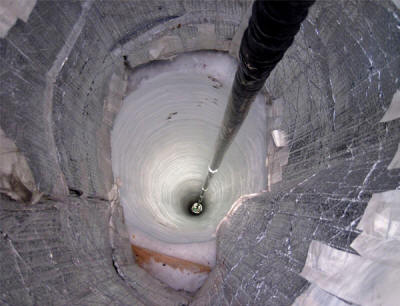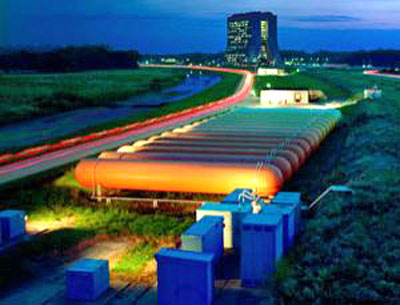|
from NewScientist Website
Cosmic rays crashing into the Earth over the South Pole appear to be coming from particular locations, rather than being distributed uniformly across the sky.
Similar cosmic ray "hotspots" have been seen in the northern skies too, yet we know of no source close enough to produce this pattern.
Westerhoff and colleagues used the IceCube neutrino observatory at the South Pole to create the most comprehensive map to date of the arrival direction of cosmic rays in the southern skies.
IceCube uses detectors buried in Antarctic ice (Image: NSF/B Gudbjartsson)
IceCube detects
muons produced by
neutrinos striking ice, but it also detects muons created by cosmic
rays hitting Earth's atmosphere. These cosmic ray muons can be used
to figure out the direction of the original cosmic ray particle.
Good mystery
These muons revealed, with extremely
high statistical significance, a southern sky with some regions of
excess cosmic rays ("hotspots") and others with a deficit of cosmic
rays ("cold" spots).
It's a mystery because the hotspots must be produced within about 0.03 light years of Earth. Further out, galactic magnetic fields should deflect the particles so much that the hotspots would be smeared out across the sky.
But no such sources are known to exist.
Cosmic funnel
Cosmic rays coming from such large
distances should be constantly buffeted and deflected by galactic
magnetic fields on route, and should thus have lost all
directionality by the time they reach Earth. In other words, such
long-distance cosmic rays should appear to come from all parts of
the sky. That's not what has been observed.
As an explanation, Felix Aharonian of the Dublin Institute for Advanced Studies in Ireland and colleagues have suggested that there could be a "tube" of magnetic field lines extending between the source and our solar system, funnelling the cosmic rays towards us.
However, Aharonian admits the theory is
highly speculative.
Westerhoff's team presented their
results at the
American Physical Society's meeting
in Anaheim, California, on Saturday.
|


